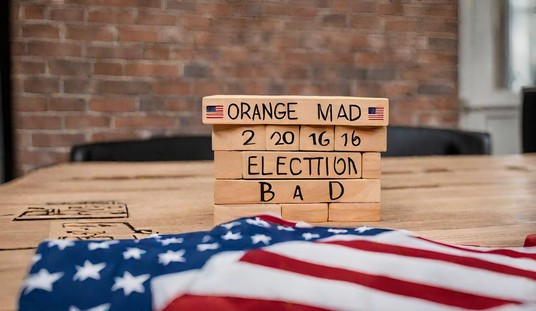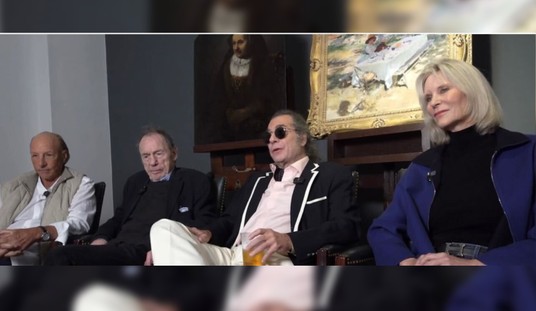Editor’s Note: This is the second pre-Halloween list this year. The first was “The 10 Worst Horror Films on Netflix: Drinking Game Edition.” What would you like to see next in this series before Halloween next week?
As it is with art or humor, horror is subjective. What might frighten one person might do nothing for another. And especially today, when there are so many things in our modern world that are scary, fright has been parsed virtually to its constituent components.
What scares modern audiences is more likely to be found in threats that grow directly from real life. Thus, films of past decades, whose themes may have just rolled off the backs of viewers like water off a duck, now resonate with renewed discomfort.
A new uncertainty has gripped modern society as it struggles to meet a rising restlessness. New monsters represent the looming chaos that threatens to overturn our heretofore predictable and comfortable lives. We can sit before our theater-sized TV screens in our cozy McMansions snug in our gated communities and pretend the rising chaos of the outside world won’t effect us, but in the back of our minds we know that isn’t true. That when our leaders take their hands off the tiller, or drop the reins, control is lost and confusion ensues followed by a metaphoric zombie apocalypse. Thus, perhaps, watching our monsters where they remain safely imprisoned behind the television or movie screen, we can pretend all is fantasy and that really, there’s nothing to worry about…until the schools close due to an Ebola scare, or there’s a run at the supermarket when the power fails, or a riot breaks out at a pumpkin festival, or a bomb explodes at a marathon event…
10) Alien
A relative latecomer to the monster sweepstakes, the creature from the film Alien (1979) definitely deserves a place of honor among the best of all time. In a single move, the alien creature (not to be confused with Universal’s Gill Man) brought the haunted house genre into the 21st century and created a horrific being perfectly suited to an age where technology and science was reaching its apogee, threatening to get out of control on any number of fronts!
9) Satan
Satan had been featured in countless horror movies for decades before starring in The Exorcist (1973) but it wasn’t until director William Friedkin’s shocking portrayal of the Lord of Flies that the devil’s true horror hit audiences like a sledge hammer! A veritable counterweight to Alien, The Exorcist was the opposite extreme of fear hitting at a time just prior to the blockbuster emergence of Star Wars that reset audience POV from supernaturally based fears to the technological.
8) Colossus
The march of science as the bogeyman for the 21st century had an early start with Colossus: The Forbin Project (1970) but it may have been a voice crying in the wilderness, touching upon fears of atomic annihilation rather than the more subtle scientific threats faced by future generations. But the rule of Colossus as a metaphor for technology that threatens to overwhelm modern society is more appropriate today than ever with the machine’s final lines in the film being some of the most chilling ever featured, especially in a world where people are becoming ever more dependent on their devices.
https://www.youtube.com/watch?v=DkY3avVDuYQ
7) Andromeda
The opening scenes of The Andromeda Strain have become even more disturbing than they were in 1971 with the recent outbreak of Ebola in Africa and its arrival on American shores. Although the steady competence of the team of physicians and scientists of the Greatest Generation working in a super secret, wildly secure facility no doubt gave audiences forty-five years ago a sense of security in their government’s ability to handle a medical crisis, it only serves to underscore the lack of competence and loss of institutional memory in today’s CDC. In the wake of its response to the Ebola crisis, people today may be justified in their fear of the possibility of a deadly epidemic breaking loose in the country. For that reason, the microscopic Andromeda just may be one of the scariest monsters of all time.
6) Tanker Truck
Who in our modern world of interstate highways and intricate roadway systems has not felt the frisson of fear about the possibility of their car breaking down alongside the highway? In an age so dependent upon motorized transportation, people spend a good chunk of their lives driving, and to find yourself victim of “road rage” is perhaps one of the most unnerving experiences anyone could have. Enter Duel (1971), writer Richard Matheson and director Steven Spielberg’s masterpiece that taps directly into every motorist’s nightmare scenario: A BST (Big Scary Truck) relentlessly pursuing them across miles of empty highway seemingly determined to squash their puny car under its eighteen wheels and 40 tons of hurtling steel!
5) Norman Bates
Tapping into one of our most primal fears, the seemingly harmless persona of motel proprietor Norman Bates, the monster at the heart of Alfred Hitchcock’s Psycho (1960), is as modern a monster as they come. In the days before serial killers were known as serial killers and the psychology of the criminal mind was for the most part based on guess work (as it apparently still is), Norman Bates was a particularly scary figure with his dimly understood motivations and disturbing hang ups…a profile that still scares the willies out of people today.
4) The Shape (aka Michael Myers)
In the tradition of Norman Bates but different. Michael Myers (or “The Shape,” as he was known before given a name and back story in numberless sequels to director John Carpenter’s 1978 opus Halloween), caused a sensation when he first appeared as a masked serial killer. More than Norman Bates, whose psychoses at least made a stab at explaining his motivations, Michael Myers seemingly had none except vague hints about murdering his sister when a child. Why does he continue to kill? No one knew and more importantly, there was no serious attempt to explain his actions. (At least in the first film; later audiences would learn that Laurie, the heroine of the first film, was actually his sister and it was she who had been his prime target, a revelation that considerably watered down Myers’ initial unsettling anonymity.) It was the mysterious nature in his first appearance, the very inexplicability of his purposes, the lack of reasoning behind his crimes, that ironically made The Shape’s emotionless visage the changing face of horror in a world that had begun to fear the monster next door more than such unlikely menaces as vampires and werewolves.
3) Zuni fetish doll
Despite the growing number of true-to-life monsters like Norman Bates or The Shape, there was still room for supernatural horror, at least in the mid-1970s. Exhibit A: 1975’s Trilogy of Terror! Three stories adapted from a trio of horror master Richard Matheson’s short stories, this made-for-TV film features actress Karen Black as the star of each tale designed to create a mood of mounting discomfort until the climactic episode that anyone who has ever seen it never forgets: “Amelia.” But no one knows the story by that title. Adapted by Matheson himself from his short story “Prey,” it tells the tale of a young woman who receives as a gift a small fetish doll in the shape of an Zuni warrior. But when its necklace falls off, the figure comes to life and its only purpose is to kill! What follows is 15 minutes of sheer terror as the young woman is chased around her apartment by the bloodthirsty little creature. While the source of the film’s horror is of supernatural origin, and seemingly runs counter to the trend of modern films, “Prey” nevertheless strikes at a source of primal fear that viewers still seem to share with primitive ancestors who huddled by campfires hoping that it would keep whatever lurked in the dark at bay.
2) The Demon
After nearly forty years when the most popular movies seemed to relegate the fantastic to the back-burner while promoting more contemporary monsters in their stead, the supernatural made a big comeback in 2007 when writer/director Oren Pell produced Paranormal Activity. Seemingly the end result of a wave of popular “documentaries” on ghosts, poltergeists, etc., Pell took them one step further, producing a film composed of “found footage” that had the advantage over traditional film production techniques by making the action far more immediate. Taking his cue from the groundbreaking Blair Witch Project (another amazingly effective scare picture that pioneered the found footage format), Pell tells the story of a young woman haunted since childhood by her own personal demon, one who is goaded to heightened activity by the woman’s boyfriend, who insists on setting up a movie camera in their bedroom to film during the night. The hope is to capture evidence of the demon.
What transpires is a series of small events that together add up to mounting fear that seemingly dismisses the real-world trend of recent decades for a return to the supernatural; a switch that viewers easily adapted themselves to. Do the Paranormal Activity movies signal a new uncertainty in people’s lives? Does the appearance of a rising chaos in the world leave people confused and unable to explain why things seem to be spinning out of control? Are they subconsciously resorting to the supernatural in a desperate attempt to make sense out of the senseless? If so, that would make the unseen demon in Paranormal Activity one of the most frightening creatures in movie history!
1) Dracula
It’s hard to believe in this day and age when sexual deviancy, senseless violence, even cannibalism can be seen every night on the television set that Dracula (1931) once scared the bejeebers out of movie audiences. Strong men blanched, women fainted, and film boards considered it too strong for audiences to take. Perhaps the fright was due to the discomfort of a twentieth century society that believed it had left such superstitions behind in the old country. Did Dracula challenge those assumptions that maybe weren’t buried as deeply as everyone thought? Be that as it may, the vampire deeply frightened generations of people long before Count Dracula made his stage and film debuts and continued to disturb audiences long after. Even in our more enlightened era when the vampire has evolved into a young adult tortured by his emotions and desire to just fit in, the creature is still an overall scary thing that has become a symbol of modern society’s castoffs and misfits who are unable or unwilling to conform and who continue to frighten with occasional bursts of horrific violence. For that reason and its ability to adapt to the changing zeitgeist, the vampire as embodied in Dracula will continue to be the number one monster of all time.








Join the conversation as a VIP Member